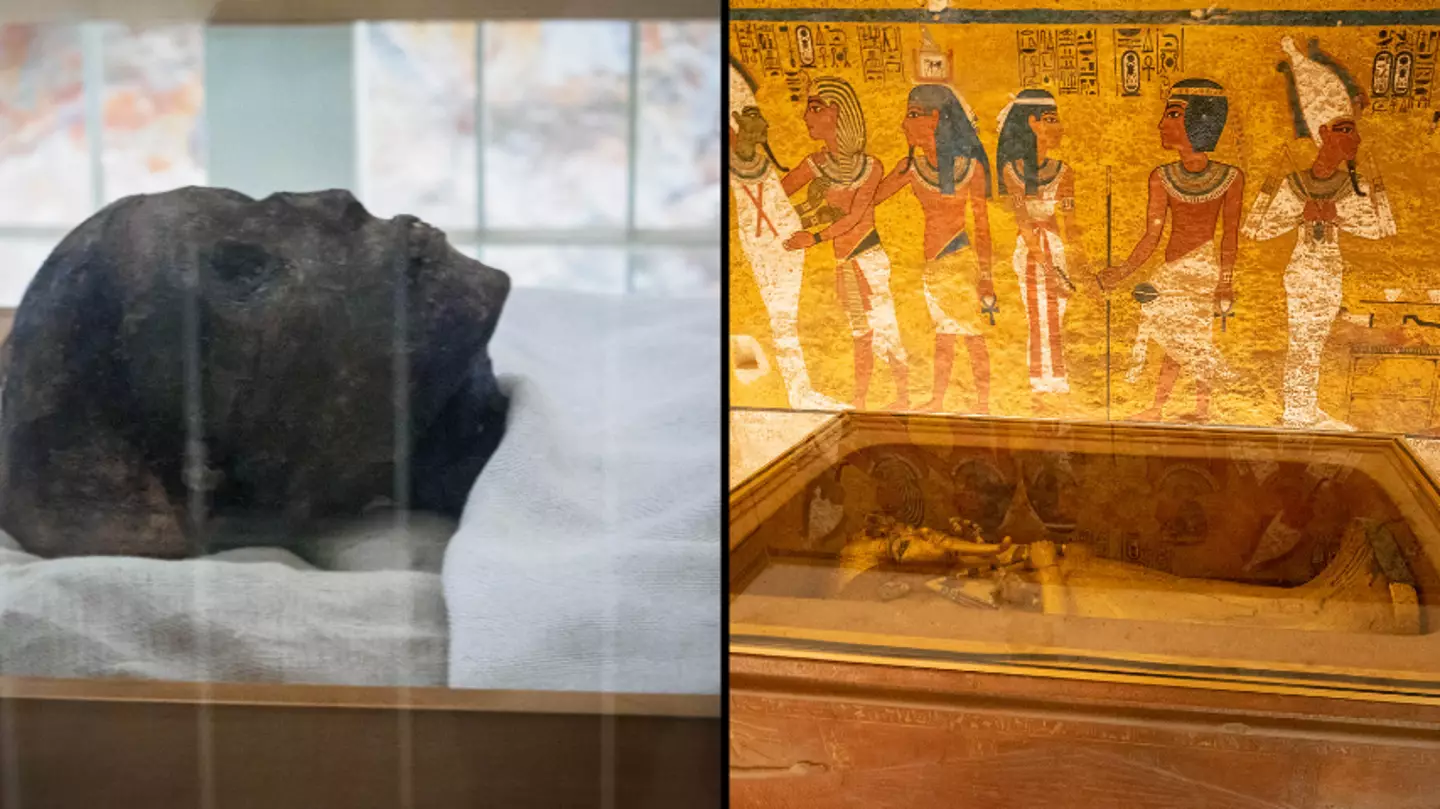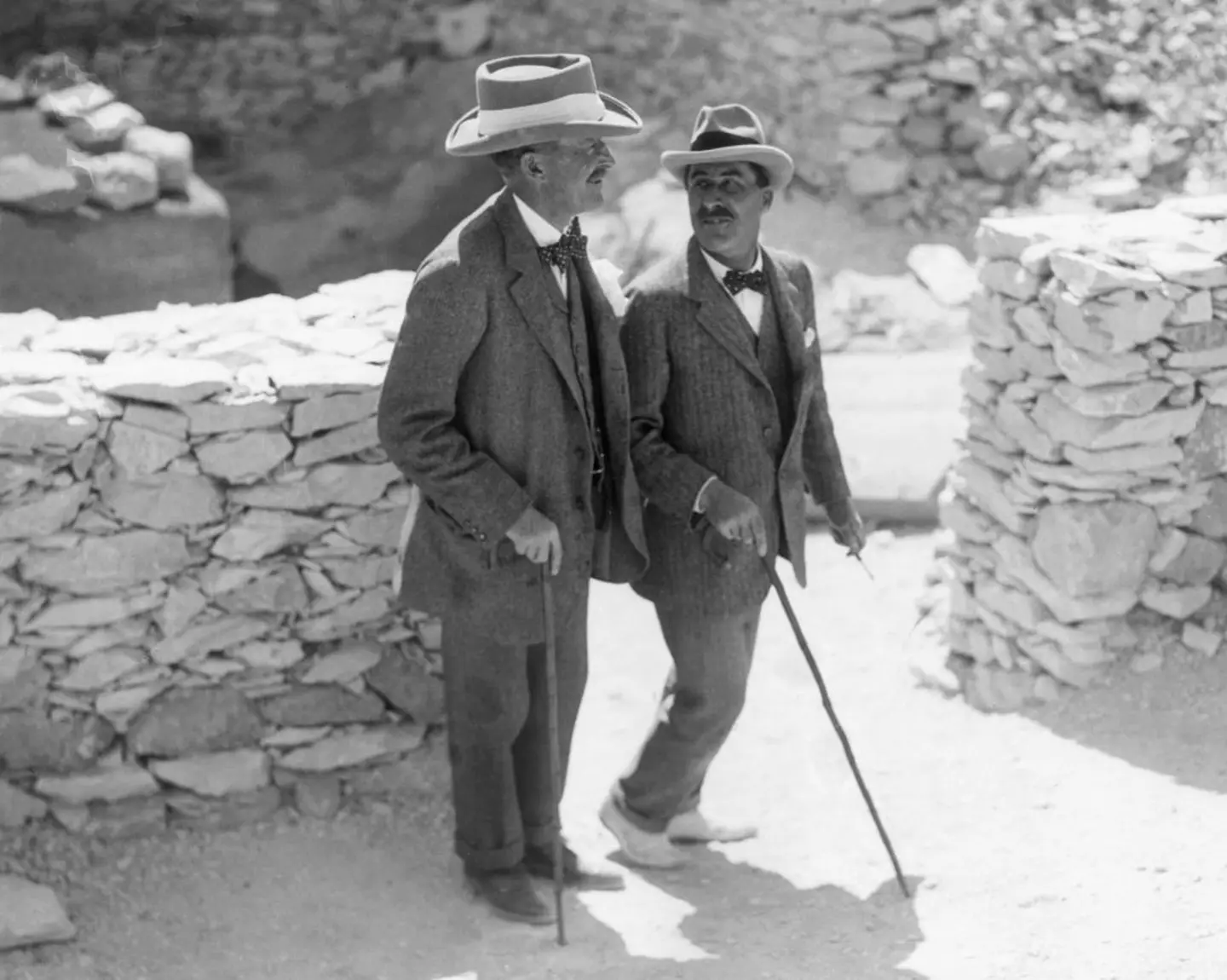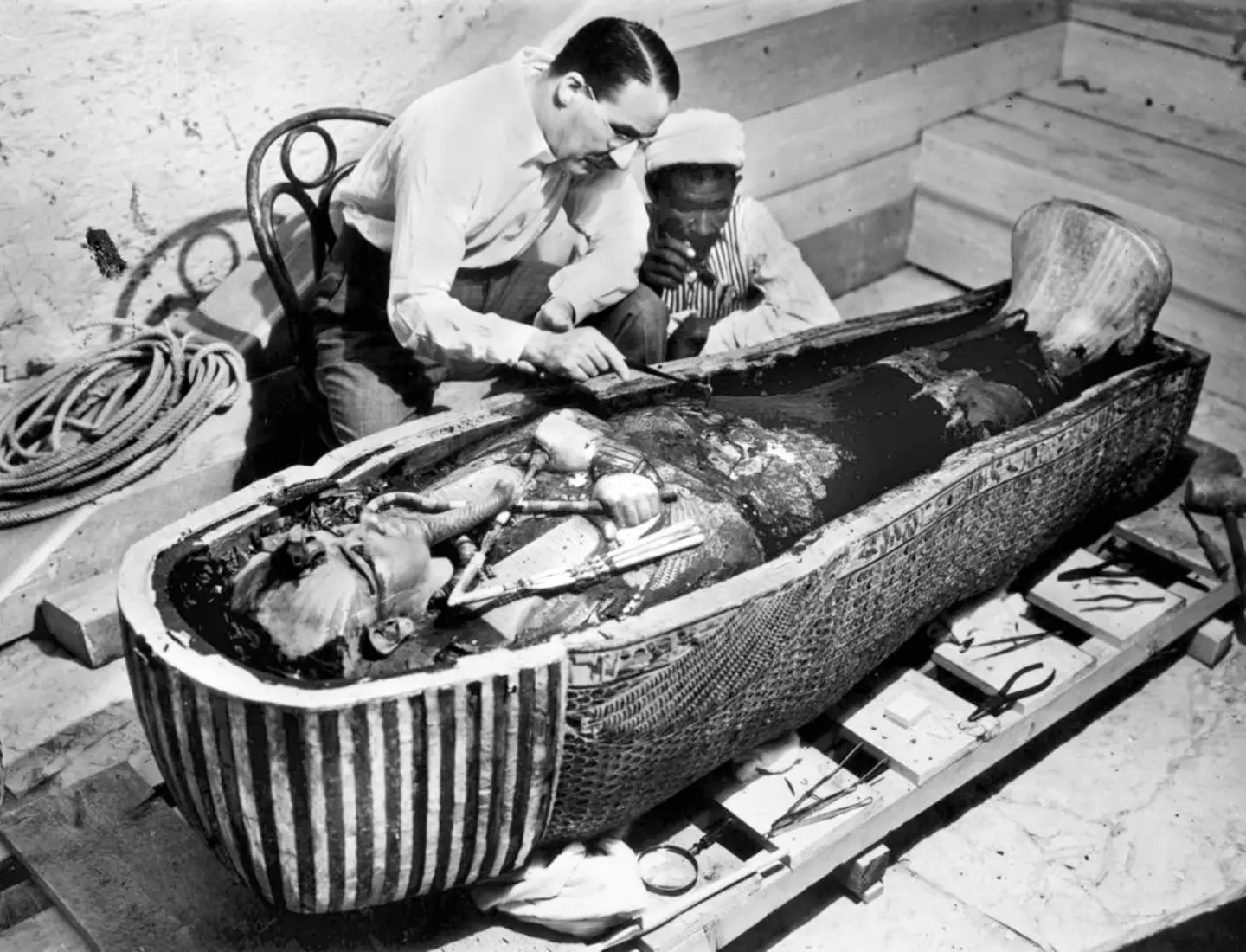
Scientists might finally have some answers about a 'curse' that allegedly killed 20 people who opened Tutankhamun's tomb.
Known as the 'Pharaoh's curse', it all started back in 1922, when 20 people opened the tomb.
It's something that has been written about in ancient Egyptian texts, where those who disturbed the mummified remains would suffer 'death by a disease that no doctor can diagnose'.

However, despite the very eery warnings, a new study, written by Ross Fellowes in the Journal of Scientific Exploration, could have found the answer to what really happened over 100 years ago.
Advert
It's believed that the cause of the deaths resulted from radiation poisoning from natural elements containing uranium and toxic waste.
Exposure to these can lead to cancers, one of which took the life of an archaeologist named Howard Carter, who was the first person to enter Tutankhamun's tomb in 1922.
Carter passed away 11 years later after battling Hodgkin's Lymphoma - a cancer which has been linked to radiation poisoning.
Other people who entered the tomb include Lord Carnarvon, who died from blood poisoning five later.
Advert
Others who entered have died in their fifties, of medical conditions including asphyxia, stroke, diabetes, heart failure, pneumonia, poisoning, malaria and X-ray exposure.
“Both contemporary and ancient Egypt populations are characterized by unusually high incidences of hematopoietic cancers, of bone/blood/lymph, for which a primary known cause is radiation exposure,” Fellowes wrote in his study.
But the radiation isn't limited to the tomb, with Fellowes explaining that high levels of radiation have been found throughout sites in Egypt.
Advert
“Radiation has been detected by the Geiger counter at two sites at Giza adjacent to the pyramids,” he wrote.
It's believed the ancient Egyptians were aware of the toxins, with Fellowes adding: “The nature of the curse was explicitly inscribed on some tombs, with one translated presciently as, ‘they that break this tomb shall meet death by a disease that no doctor can diagnose.'"
There were other peculiar events that happened once the tomb was opened.
Apparently, according to National Geographic, Cairo experienced a power outage and a sandstorm.
Advert
Meanwhile, Carnarvon's dog is reported to have howled before suddenly dropping dead.

Tutankhamun is one of the most famous of the Ancient Egyptian kings.
He took the throne at the age of nine and ruled the empire until he was 18, when he died.
Advert
According to studies, scientists believe that it's most likely to have been from a broken leg.
A popular theory was that he died from a blow to the head, but this was later disproved following a CT scan of his body.
Featured Image Credit: Getty Stock ImagesTopics: Science, World News, History
